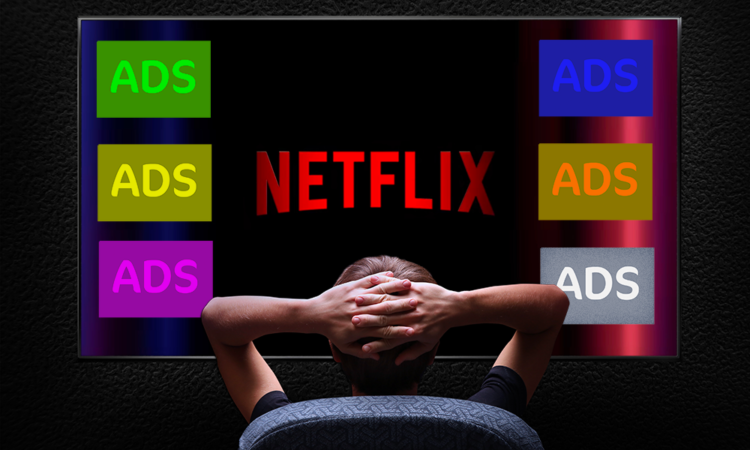The Netflix delusion: Turns out the normal rules of media did apply, after all

Opinion: 100% Media 0% Nonsense
The streaming giant’s decision to stop reporting subscriber numbers next year is proof that ad-free media for the masses was always going to be a blip.
It’s been nearly a quarter-century since David Bowie warned us that the internet is an “alien life form” that we don’t understand.
In so many ways, that remains true today. Even in the limited realm of digital advertising, a quick glance at the IAB taxonomies for audience, ad products and content are enough to make you want to throw your phone in the bin and retreat to the wilderness. Our industry has become a complicated world that increasingly seems like only AI machines will truly understand it.
But you know what’s not that complicated? The economics of television, or any other mass-media commercial product, which is dependent on advertising and other commercial products to sustain the hefty costs of production, rights acquisition and distribution.
Now that Netflix will no longer publish its subscriber numbers next year, we know that even the world’s largest streaming business cannot change this equation.
Look at cash flow, not subscriber numbers
Netflix made huge bets at the outset of the so-called “streaming wars” by spending billions on original content.
And yet the most important storyline has always been what co-CEOs Greg Peters and Ted Sarandos have fed investors during its earnings reports as a public company. Up until last week, that story was about subscriber growth, which justified its strategy to invest in hits such as House of Cards and Orange is the New Black.
Now, Netflix says it will stop reporting subscriber numbers and average revenue per user from the first quarter of 2025. Peters explained during the earnings call: “We’ve also evolved our pricing and plans with multiple tiers, different price points across different countries. I think those price points are going to become increasingly different.
“All of that means that that historical simple math that we all did, number of members times the monthly price, is increasingly less accurate in capturing the state of the business.”
Indeed, “the state of the business” has been to hastily launch an advertising tier in 2022 and benefit from short-term bounces in subscriber growth by cracking down on password-sharing in 2023.
So the new storyline is one in which we shouldn’t focus on subscribers flatlining but instead look purely at revenue numbers. It will be interesting to see whether the company will start disclosing advertising revenue, which, whether Netflix likes it or not, is now key to the company’s growth.
In other words, Netflix is no different to Disney, Paramount, Warner Bros Discovery and Comcast — just another international TV company that is dependent on the same economic equation.
Netflix talks Apple, but is not Apple
Maybe that’s why we rarely hear the FAANG acronym any longer — the one that used to lump Netflix in with Facebook (now Meta), Apple, Amazon and Google as a high-growth tech superpower.
Today, Netflix’s more important memberships are with Thinkbox, the UK commercial TV marketing body, and Barb, the UK television measurement company. While Wall Street executives may have been happy to value Netflix purely on the basis of whatever metrics the company decided to reveal, advertisers need more reassurances. Netflix needs to build trust with advertisers by being part of established measurement systems.
5 things we learned from Barb’s CEO about Netflix, YouTube, and Origin
Interestingly, Netflix shares fell by more than 8% on Friday following its earnings announcement, suggesting that analysts may smell a rat. The decision to no longer issue subscriber numbers did sound like a familiar tech company move, like when Apple decided in 2018 to stop talking about how many iPhones it sold.
But here’s the difference: Apple is a true tech monopoly. Netflix is not.
Apple has market dominance in affluent smartphone users, meaning it can charge a 30% tax on any app maker’s revenue if a customer downloads it from Apple’s App Store. In one swift move, it can blow a hole in another tech giant’s advertising strategy, as it has done with Meta and Spotify.
Indeed, Netflix, as an app maker for Apple’s iOS, must pay the tax too. According to SensorTower, Netflix generated $16m in iOS mobile app revenue last month. Spread over a year, it means well over $50m is being siphoned off to Apple from Netflix.
That doesn’t make Netflix a FAANG. That makes it a FAAG-end. Which is appropriate, given the smoke and mirrors of “investor relations”.
Ad-free was always a blip
Why many were wrong about Netflix is because they assumed the internet had changed the rules of media.
When Netflix achieved a breakeven year in 2021, this was a big deal because the company had become cash-flow-positive purely by taking money from subscriptions. It seemed to justify founder Reed Hastings’ decision to ramp up spending on content in 2012 and double down on its first-mover advantage.
Then, every time Netflix announced a rise in quarterly subscriptions, its stock went up. So it had to keep spending on content and marketing to lure in more subscribers, otherwise the Wall Street music would stop. The reckoning came in 2022 when the pandemic subsided — we rediscovered hobbies other than watching TV. And hence ads.
It’s estimated that Netflix spent just under $10bn between 2011 and 2020 to get to where it is today.
Was it worth it?
 Omar Oakes is editor-in-chief of The Media Leader
Omar Oakes is editor-in-chief of The Media Leader
100% Media 0% Nonsense is a weekly column about the state of media and advertising. Make sure you sign up to our daily newsletter to get this column first in your inbox every Monday, as well as key updates with what’s happening at The Media Leader and our upcoming events.
The BBC has touched the third rail by launching UK ads. But why?
Forbes’ seven-year MFA scheme shows how deep the rot runs in online advertising



